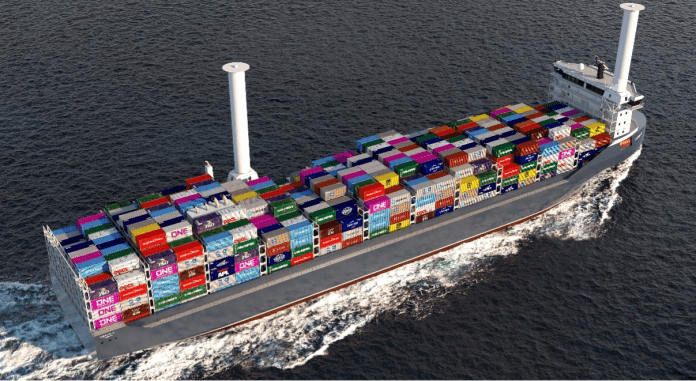
Kongsberg Maritime (KM) and the provider of auxiliary wind propulsion systems Norsepower Oy Ltd, have signed a Memorandum of Understanding (MoU) to facilitate the addition of wind propulsion to KM’s integrated power and propulsion systems.
Under the MoU, ship owners and shipyards will be able to choose between fully integrated power and propulsion systems, or solutions incorporating stand-alone products.
The marine technology company KM delivers integrated equipment packages including advanced propellers, power management, energy optimisation, propulsion drive train products, power take-off and take-in (PTO/PTI) systems, as well as energy storage.
By teaming up with Norsepower, KM aims to become a leading integrator of green shipping technology, by adding wind propulsion to its portfolio of strategies for greener operations, supported by its controllable pitch propeller (CPP) solutions, which manage the power delivered by Norsepower’s Rotor Sail systems.
“Norsepower Rotor Sails are a great fit with our strategy as they are a proven and economical solution,” stated Oskar Levander, Senior Vice President for Business Concepts of Kongsberg Maritime, who went on to add that this MoU is a great way to strengthen KM’s capability to consult customers when planning their future fleet additions.
The Norsepower Rotor Sail solution which, according to a statement, is the first third-party verified auxiliary wind propulsion technology for the global maritime industry, is fully automated and detects whenever the wind is strong enough to deliver fuel and emission savings.
This fuel-saving technology supports the decarbonisation of the shipping industry and, hence, the Finnish clean technology and engineering company Norsepower has completed six installations to date.
CEO of Norsepower, Tuomas Riski, noted that the partnership will help fast-track optimising operations for shipowners and yards developing complete solutions.
“The shipping industry is under intensifying pressure to decarbonise, and as the industry combines clean technology solutions to accelerate progress towards reaching net-zero, it is important that the optimal design points are considered on installation for all systems,” pointed out Riski.





